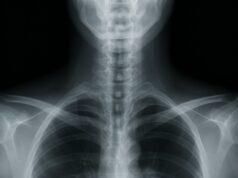Public transit systems rely heavily on advanced technology to monitor vehicles and drivers. These systems are designed to improve safety and prevent accidents. When the data they collect is inaccurate or incomplete, investigations become far more complicated. These issues often matter most to people taking legal action following a bus collision when they need clear answers about what went wrong.
The Role of Telematics in Modern Transit
Telematics systems track vehicle speed, braking patterns, and engine performance. They create a digital record of how the bus was operating before and during a crash. This data helps investigators understand the events leading up to an incident. When functioning correctly, telematics provide precise information.
They show whether the bus slowed down properly, accelerated too quickly, or experienced mechanical problems. However, faulty systems can distort these details. Incorrect data may create confusion and cast doubt on the accuracy of the findings.
How Telematics Errors Affect Crash Analysis
A malfunctioning telematics system may record incorrect speeds or miss sudden changes in movement. This can lead investigators to believe the bus was driven responsibly when it was not. Alternatively, inaccurate data may unfairly suggest driver error.
A bus may be speeding when the system simply misreads the sensors. These errors can complicate responsibility. Investigators must determine whether the data is trustworthy before relying on it.
The Importance of Driver Monitoring Systems
Many transit agencies use driver monitoring technology. Cameras and sensors track eye movement, head position, and the driver’s alertness. These systems help identify signs of distraction or fatigue. They are beneficial because they provide real-time insight into the driver’s condition.
They show whether the driver was focused on the road or dealing with another issue inside the cabin. This information becomes vital during crash investigations. It helps reveal whether human factors contributed to the incident.
When Driver Monitoring Data Fails
Like any technology, monitoring systems can malfunction. Cameras may be blocked or poorly calibrated. Sensors may misread the driver’s posture or alertness. These errors can create inaccurate pictures of the driver’s behavior. Investigators may believe the driver was alert when they were not.
They may also think the driver was distracted, even though the data is simply wrong. Faulty information leads to incorrect assumptions. This complicates efforts to determine what truly caused the crash.
How Data Gaps Slow Down Investigations
When systems do not record data properly, significant gaps appear in the timeline. Investigators may be missing minutes of crucial information. These gaps make it harder to understand the sequence of events.
They can also hide essential signs of mechanical issues or driver struggles. Without a complete record, investigators must rely more on witness statements and physical evidence. This slows the process and makes it harder to reach conclusions.
Conflicting Evidence Creates Additional Challenges
Sometimes, telematics data conflicts with driver monitoring information. One system may show signs of aggressive driving while the other shows normal behavior. Investigators must figure out which system is correct.
They must also consider whether environmental factors influenced the readings. These conflicting signals make the investigation more complex. They require a detailed technical review to determine what information is truly reliable.
The Need for Expert Analysis
Faulty or unclear data requires expert interpretation. Specialists understand how telematics and monitoring systems work. They can identify when sensors malfunction or data is misread. Their input helps clarify what happened before the crash.
They examine how devices were maintained, how often they failed, and whether any patterns exist. Expert analysis is essential when technology provides inconsistent information. It helps uncover the truth in complicated cases.
How Maintenance Records Influence Findings
Maintenance plays a significant role in determining whether telematics errors are predictable. If the system was overdue for service, investigators may suspect equipment failure. Facilities must document how often devices were checked and updated.
Poor maintenance increases the risk of inaccurate readings. Maintenance records help determine responsibility. They indicate whether the transit agency properly maintained its equipment.
The Impact on Passengers Seeking Answers
Passengers who suffer injuries want clear explanations. Faulty data makes this difficult. They may feel uncertain about what caused the crash or who is responsible. Accurate information helps victims understand their situation.
It supports their efforts to recover and seek fair compensation. Without reliable data, victims must rely on additional evidence. This can delay decisions and create unnecessary stress.
Why Technology Should Be Regularly Evaluated
Transit agencies should regularly review their technology. Regular evaluations help identify problems before they affect safety. Testing and calibration ensure that systems remain accurate over time.
This protects passengers and strengthens crash investigations. Continuous improvement helps create safer environments for everyone who depends on public transit.
Final Thoughts
Faulty telematics and driver monitoring data can create significant obstacles during public transit crash investigations. These systems are designed to offer clear information, but errors can distort the truth. Careful analysis is essential when evidence appears incomplete or unreliable. Many injured passengers face these challenges when taking legal action following a bus collision and need accurate information to understand what truly happened.







